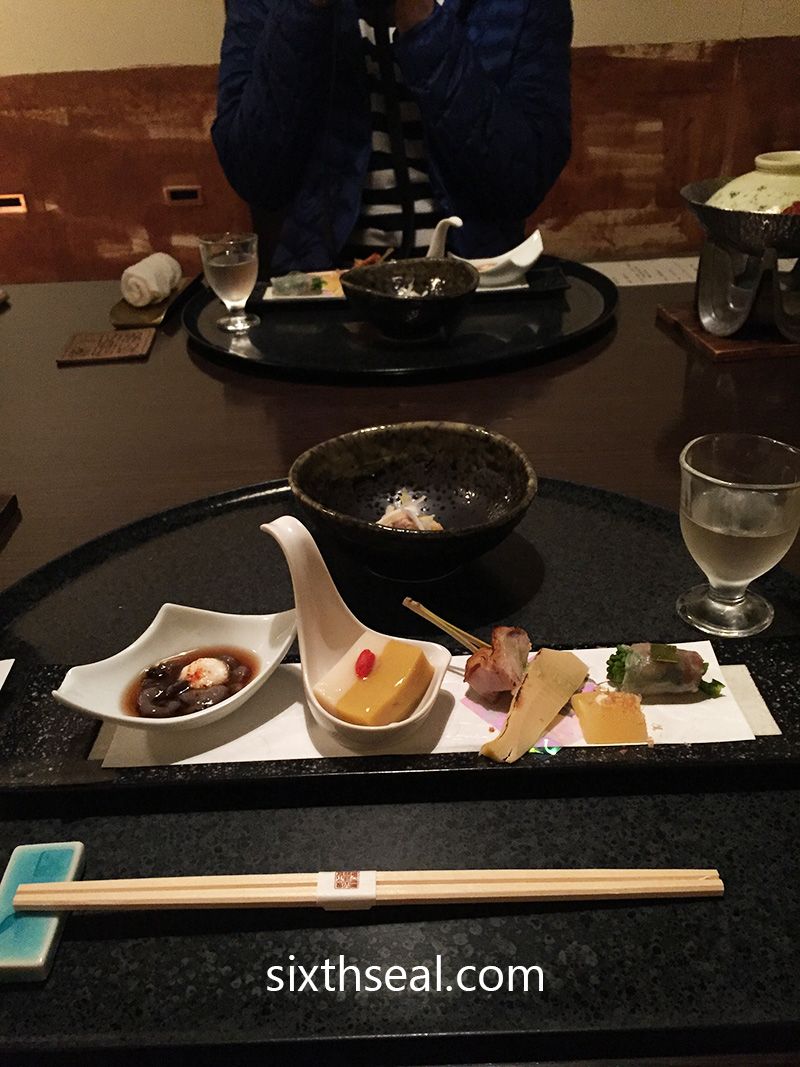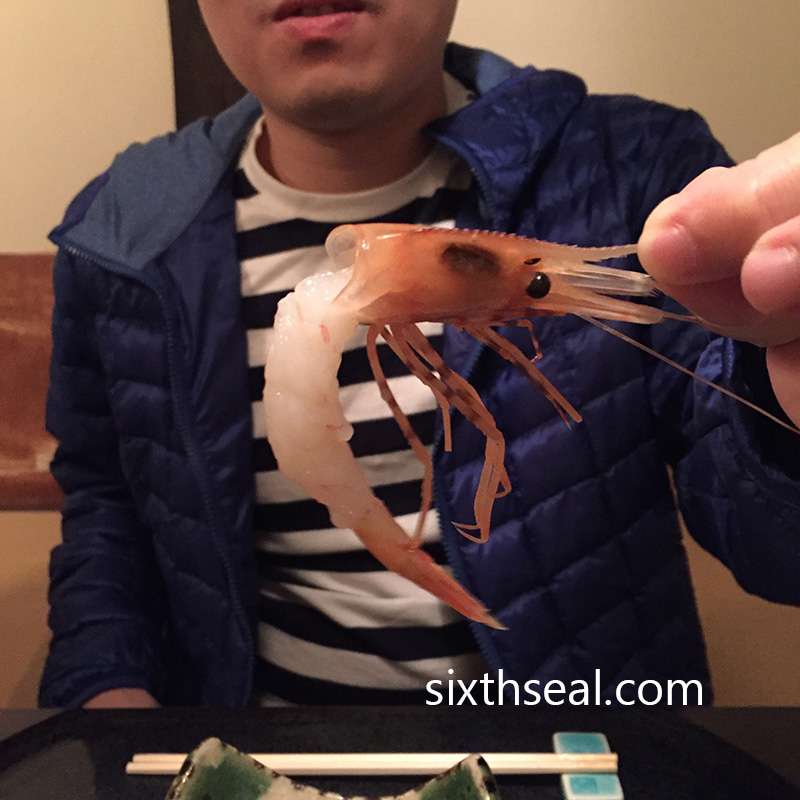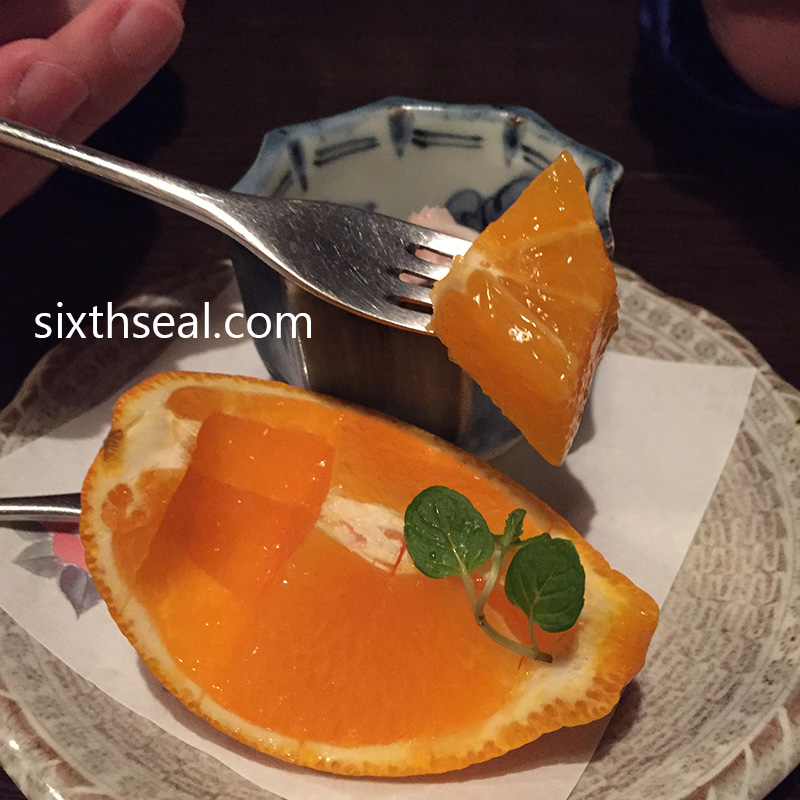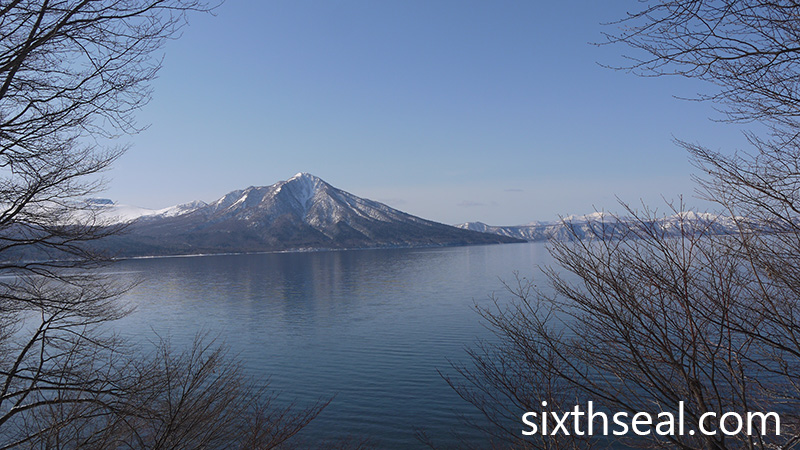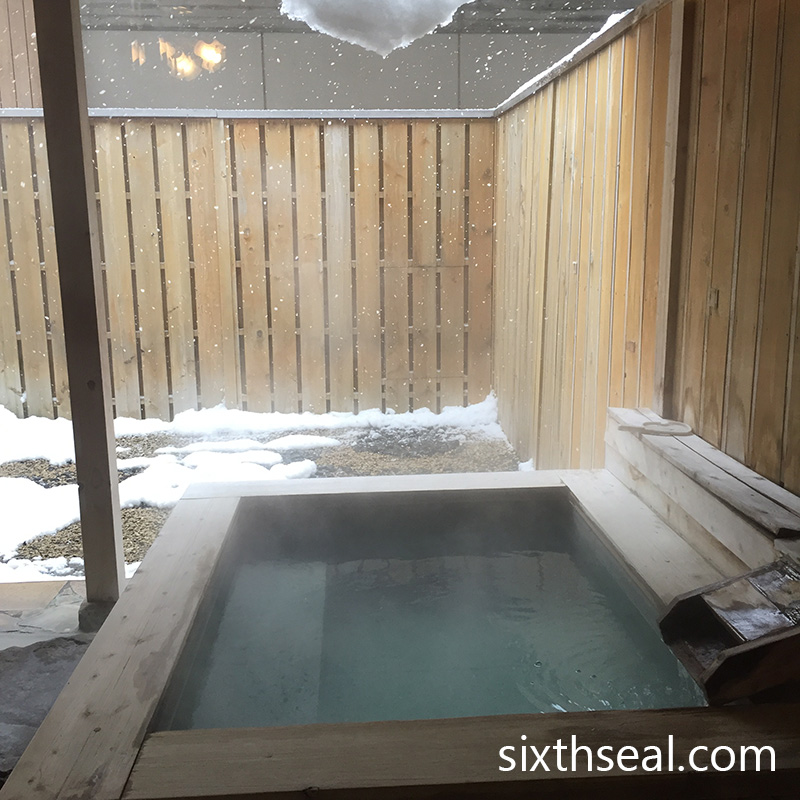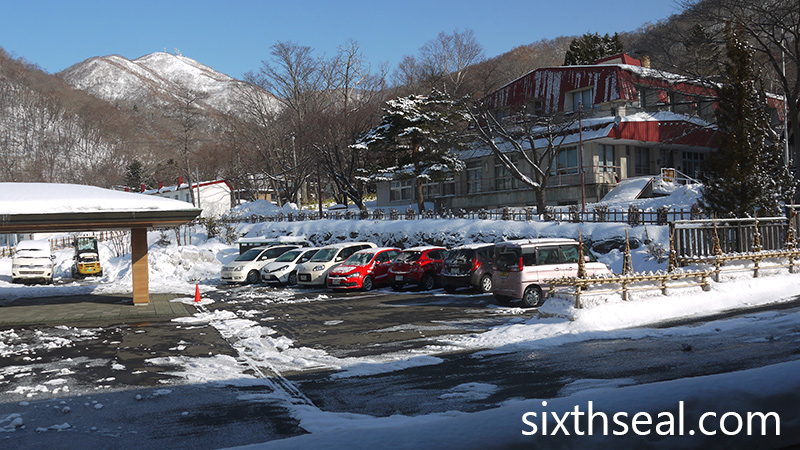
Ryokan stays are fully catered affairs. All your meals are taken care of (except lunch, since you arrive at around 3-4 pm) and everything is included in the price. We woke up bright and early during a winter morning’s day in Hokkaido and went for their elaborate and filling Japanese breakfast. It was truly a feast of epic proportions!

The personalized menu was printed on a sheet of slick paper and the tables were all set and ready for us when the kimono clad girl led us to our seats. This is a very nice touch, they had asked yesterday during check-in what we wanted for our drinks (choice of various local fruit juices) so it was freshly squeezed and waiting when we walked in at the stipulated time.

This is a Japanese style breakfast, which is centered around rice, grilled fish, pickles (tsukemono), tofu, eggs, salad, vegetables, natto and miso soup. It had all the components of a traditional breakfast and more!

The salad has become a fixture in breakfast tables around Japan and they’ve adopted it as their own now. This is the seasonal salad (旬のさらだ) which has daikon as its base, supplemented by vegetables tossed in a very Japanese style ginger and sesame dressing. I like it, it’s a nice and refreshing way to start off this heavy meal.

Next up is the homemade tofu (自家製豆腐) which comes in a beautifully creamy white custard. It was nestled in a lidded container and the staff told us to eat it with a special mirin based sauce they had provided in a tiny miniature jar. I’m not a huge fan of tofu but I understand it’s an important protein source in Japan.

The pickled ume (梅干し) is another traditional Japanese side. I love eating plum with rice! It’s so tangy and the sour plum goes very well with the sticky Hokkaido rice they provided. There are bento boxes called Hinomaru bento (日の丸弁当) which is just rice with one (1) Japanese salt plum in the middle, made to look like the Japanese flag. I can’t imagine eating rice with just ume before I came to Japan but I know it’s delicious now. My better half doesn’t like it though. No worries, more plum for me! ![]()

There is a special hot spring egg (温泉卵) that’s still in its shell, which is very apt, considering we were staying at Jozankei Onsen. The onsen egg has been softly boiled so just the whites are semi-solid. The yolk is still perfectly liquid and this makes it an ideal partner for your rice. You can crack the egg on top of your rice and mix it up like tamago kake gohan.

Japanese eggs are so good, you can even get a raw one from 7-Eleven and crack it onto hot rice. It’s lovely stuff. This egg has a soy based sauce to go with it too. Yum!
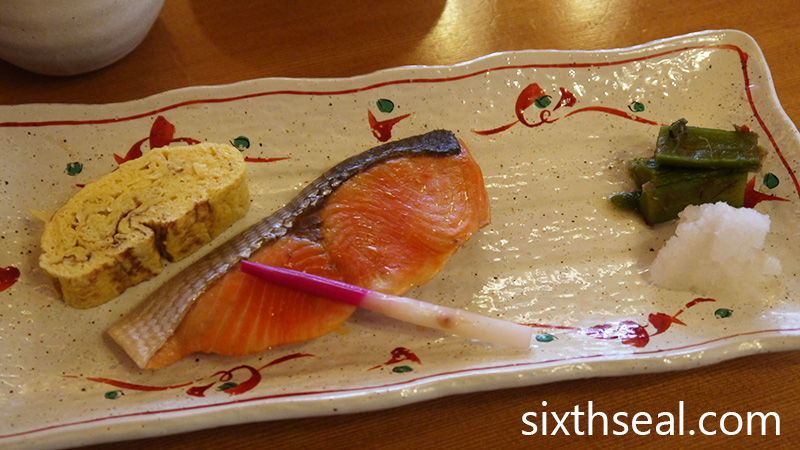
The grilled fish (焼き魚) and rolled egg (玉子焼き) are the main components of breakfast. We had Japanese salmon and there is a personal mini hot plate on top of your table where you can grill the fish to reheat it.

It’s ingenious! The surface has been oiled so you just need to put your fish on top for a few seconds before it warms up.
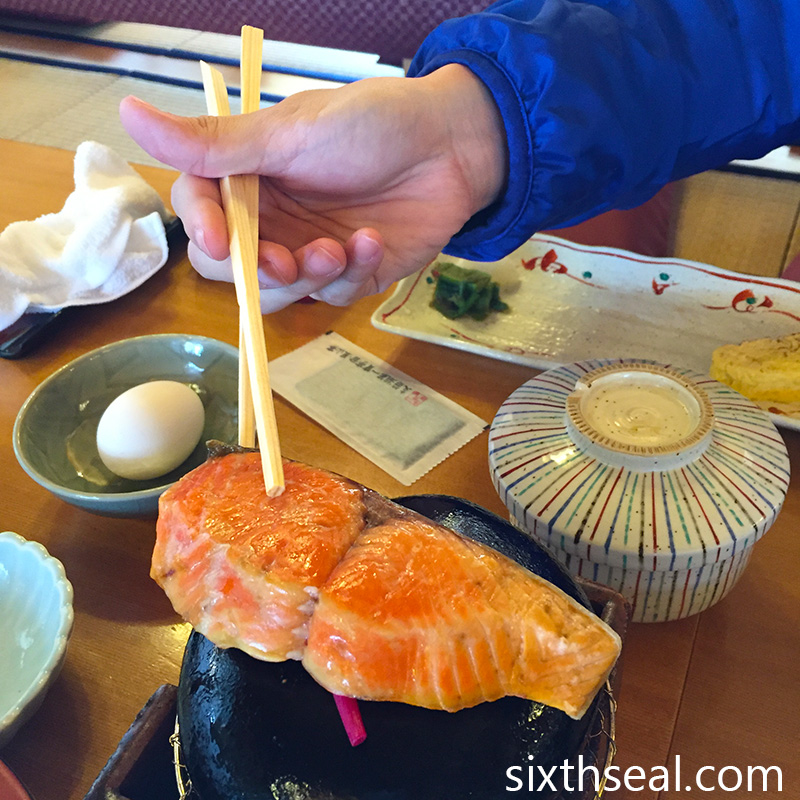
They even provide a short length of spring onion so you can put it at the bottom to impart a bit of flavor to the salmon. It was lovely and I enjoyed eating every bit of fish.

You can heat up the rolled egg too, it’s slightly sweet and very fluffy.

There is also a dish in a box (箱物) which has several sides and appetizers to go with your breakfast. The sashimi platter (お造り) is filled with fish and squid. The squid was slightly tough to eat raw but had tons of flavor. There are also containers filled with boiled spinach (法蓮草のおひたし), kelp (昆布), nine grains and beans (九穀豆) and salted cod roe (たらこ) as sides for your rice. The tarako (salted egg roe) was particularly delicious – the umami goodness can’t be beat!

The Hokkaido style natto (なっとう) is one of the highlights – you’re supposed to mix it with rice. I ate it on its own though and it was delicious! I like the sticky gooey texture of fermented soybeans. I don’t see what the fuss is all about.

There are also two sheets of nori still in their paper packaging for you to use as you see fit (it’s good in rice or miso soup). The miso soup was really good as well, as to be expected in Japan.

Desserts consisted of seasonal fruits (季節のふるーつ). There is a local grapefruit which was surprisingly sweet (always thought grapefruit was more sour than this) and a piece of pineapple. Yup, I didn’t know Japan grew pineapples but they do! It’s not as good as back home though (obviously) but that’s the only thing that missed the mark.

The Japanese style breakfast was very filling and the ryokan really subscribes to the “Eat breakfast like a king” mantra. It’s way too much food for two people and I must have missed quite a few items that they thoughtfully provided as sides or appetizers. The service was excellent too and this delicious local breakfast was the perfect way to send us off. Our ryokan experience with onsen and kaiseki dinner was truly amazing and we loved every moment of it! 🙂
